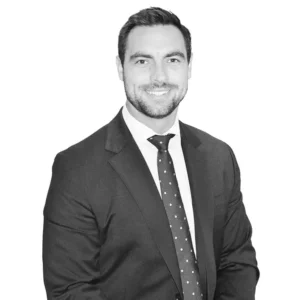A Preschoolers Paradigm
Kids are the best.
They say the funniest things, and they don’t mind telling you exactly how they feel. They’ll give you the unvarnished truth, whether you want it or not.
My four-year-old can get grumpy sometimes, as many four years olds can. It’s hard not to laugh when he gets upset, as he crosses his arms, puffs up his bottom lip, and gives a stomp and a humph. This sequence is usually followed by the declaration, “Daddy, I’m going to be upset forever.” He emphasizes the “forever” part, and with his toddler accent, he pronounces it “fo-evah!”
In your head, you can recite that “fo-evah!” comment, along with the look you might imagine, and understand why I find this to be both adorable and humorous.
What exactly is he doing? He’s doing what every preschooler does – he’s taking his current feeling and projecting it into perpetuity (Fo-evah!). He’s doing what most investors do. Investors study and digest the environment around them and assume that whatever trends are in place now will continue into the future.
Today, Tomorrow, & Forever
Subjects that have nearly become irrelevant to investors over the last decade – inflation and interest rates – have become of such great concern lately. These topics don’t only dominate the dialogue of the day, but the consensus view is that it’s only going to get worse.
Everyone thinks interest rates and inflation are going to go up fo-evah!
…but, they [interest rates and inflation] won’t.
We have economic cycles, and these waves of change oscillate over time. Most economic variables or data points expand and contract, as they seek to find their “natural” point.
The Not So Distant Past
Let’s take a quick stroll down memory lane.
In 2020, the entire world was asked to stay at home; to quarantine. Naturally, and unintentionally I might add, most of us spent less money during quarantine. Personally, our family was spending about 20% below our average. Our spending rhythms and cadence were disrupted as we couldn’t dine out, travel, and partake in the familiar entertainment activities that we were accustomed to.
As we were all spending less, businesses were just trying to figure out how to survive. This meant reducing inventory levels, adjusting down production, and exploring alternatives to their current disrupted supply chains. There was no defined end point in sight when this all began.
A consumer being deprived of their normal spending habits, and a business unsure of when demand would return. Layer on top of this some accommodative fiscal policy (PPP, stimulus checks, etc.) which would simply add even more money to the system.
Then, in 2021, things began to look and feel like they were back in 2019 – no mask mandates at the airport, business calling folks back to the office, and so on and so forth.
Cause & Effect
Now, we are seeing this all unfold: the pent-up demand of consumers that have been dreaming of doing “stuff” ever since they were put on home arrest. A consumer that is well equipped with additional savings from a lack of 2020 spending, along with government stimulus. And this consumer reality then colliding with a business owner that was thankful to just survive COVID, but absolutely not ready to meet the flood of demand that was headed their way. Too much money, chasing too few goods.
The results of all of this? Inflation. The reaction of the Federal Reserve to inflation? Raise interest rates.
Lights Out!
I think of it this way, sometimes, at my basketball gym, the lights will go out. This means that one of us has to head down to the front desk and ask them to reboot the lights.
Now, when the lights get turned off, they go dark immediately, but when they get turned on, they take five minutes or so to warm up and come on fully. These are large industrial lights, you can hear them hum before you see them flicker, as they are working hard to boot up.
You can shut off the lights of an economy quickly and swiftly, but the lag or disruption comes when you try to turn everything back on. We are living out the collateral impact of the policies put in place in 2020.
This is not a critique of how things were handled or criticism regarding some specific policy, this is simply a claim that no macro action of this weight comes without its ripple effects. These ripple effects are higher inflation which has resulted in a reaction of higher interest rates.
Dueling Mandates
Now, let’s zoom in a bit more on the Federal Reserve or Central Bank. A group that promotes what they call a dual mandate, prioritizing stable prices and maximum employment. They [The Fed] have a handful of tools they can use to help course correct either of these dual mandate objectives. The preferred tool of choice when inflation gets out of hand? Increasing the Fed Funds Rate which has its own domino effect on rates across the marketplace.
Remember, it’s a DUAL mandate, so in the future, as maximum employment starts to slip and inflation begins to normalize, will the Fed pivot and begin to accommodate (lower rates)? They sure will. This is a simple example of those cycles I referenced earlier – tightening and loosening.
Now, Personal Application
So, if you borrow today, will this be the rate you are stuck with fo-evah? No, you will typically have the flexibility to refinance debt as interest rates fall. If you lend money (e.g. buying a government treasury), will your interest rate be guaranteed fo-evah? No, just simply for the term of your treasury, whether that is 3 months to 30 years.
Am I crazy for sometimes still advising a client to take on debt in this environment, as rates are higher than they’ve been for the last five years? No. Obviously, it depends on the situation, but my focus is less on the current rate and more on what’s a reasonable assumption for the effective rate over the life of the loan. Using your financial plan and some simple/reasonable assumptions about rates, I may be recommending financing. Don’t be surprised.
Am I crazy for rejecting the idea that you should move all of your investments to a two-year treasury? No, I am not. Although you might like the peace of having a defined return over the next two years, this doesn’t provide a sufficient solution for your long-term financial plan. This is you speculating that 4% (the approximate yield on a 2-year treasury) would be better than any other investment option (stocks, real estate, high-yielding debt, etc.) over the next two years. I believe strongly there is a place for treasuries in many client portfolios – one puzzle piece of a large diversified portfolio – but remember, if your financial plan calls for a 6%-7% average return and you are locking in returns at a fixed 4% that’s not going to satiate your plan.
Never Fo-Evah!
Interest rates will not go up fo-evah!
Inflation will not go up fo-evah!
You, as an investor, MUST anchor the design of your portfolio to the objectives and targets of your financial plan. You must resist the temptation to believe that the trends of the day are going to continue in perpetuity. You must reject my preschooler’s paradigm.





